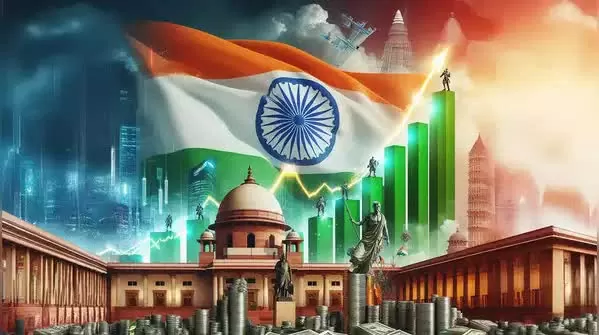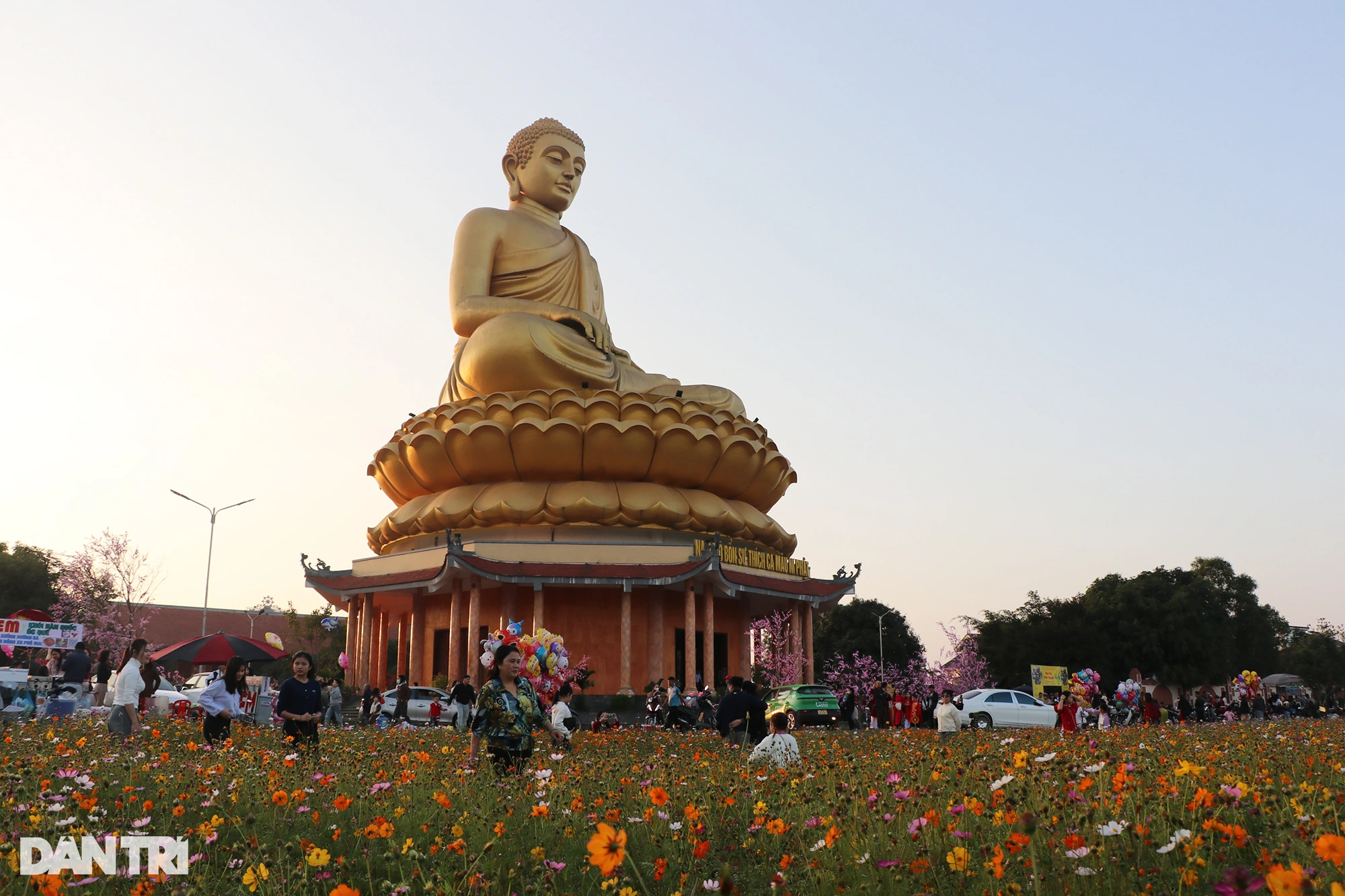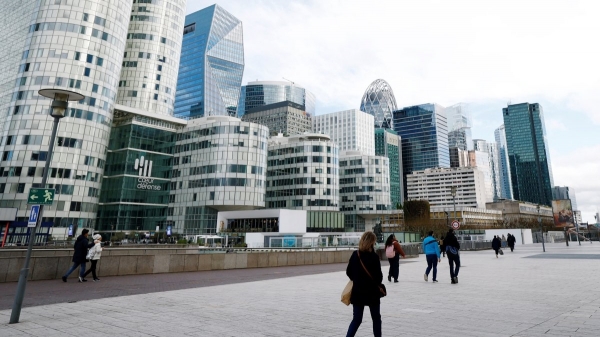To realize the initiative of “development for all” and “Developing India”, in the coming fiscal year, India will focus on four driving forces including agriculture; micro, small and medium enterprises (MSME); investment and exports.
 |
| The Indian economy is expected to soon take a new high in the World's Largest Economies Ranking. |
On February 1, Indian Finance Minister Nirmala Sitharaman presented the Union Budget for the financial year 2025-2026 to the House of Commons. This is the eighth budget she has presented and the first budget of the third term of the government led by Prime Minister Narendra Modi.
The budget continues the government's efforts to boost growth, ensure inclusive development, invigorate private sector investment, lift household sentiment and boost the spending power of India's growing middle class.
Agriculture will be the first engine of development.
India aims to increase agricultural productivity, adopt crop diversification and sustainable agricultural practices, enhance post-harvest preservation, improve irrigation facilities, and facilitate the availability of long-term and short-term credit. The program has the potential to help 17 million farmers.
India will implement the “Rural Prosperity and Resilience” programme to address rural unemployment.
The National High Yielding Seed Mission will be launched with the aim of strengthening the research, development and targeted breeding ecosystem for high yield, pest and disease resistance, climate resilience and market availability. In addition, India will continue to roll out the Kisan Credit Card (KCC) to facilitate short-term loans to 77 million farmers, fishermen and dairy farmers.
MSME - Positioning India as a Global Manufacturing Hub
With over 10 million registered MSMEs, employing 75 million people and generating 36% of domestic manufacturing, India is positioned as a global manufacturing hub. With their quality products, MSMEs are responsible for 45% of India’s exports.
To help MSMEs achieve greater economies of scale, technology upgradation and better access to capital, India will raise the investment and turnover limits for classifying all MSMEs by 2.5 and 2 times respectively. This will give them the confidence to grow and create jobs for the youth.
A new scheme will be rolled out for 500,000 women. Under this, India will provide term loans of up to USD 231,000 over the next five years. The government will set up a National Manufacturing Council comprising small, medium and large industries to further promote “Make in India” by providing policy support, implementation roadmap, regulatory and monitoring framework to central and state ministries.
Invest
Investment includes: investment in people, investment in the economy and investment in innovation.
In investing in people, India will continue to implement programs to enhance provision of nutritional support to over 80 million children, 10 million pregnant women and lactating mothers across the country and about 2 million adolescent girls in the districts and regions of the North East. In addition, India will increase support for general education, specialized education such as health, technology, artificial intelligence (AI) ...
Investing in the economy - a proposed $17.3 billion in 50-year, zero-interest loans to states to fund and encourage reform.
The government will establish an Urban Challenge Fund worth around $1.6 billion to implement the proposals on “Cities as Growth Hubs”, “Creative Redevelopment of Cities” and “Water and Sanitation”, which were announced in the July 2024 Budget.
Regarding taxes, people with income up to about 14,000 USD/year will not have to pay income tax, people with salary/income over 28,000 USD will have to pay 30% tax. The tax return submission limit will also be increased from 2 years to 4 years.
The Finance Minister has introduced the Nuclear Energy Mission to accelerate India's transition to clean energy, aiming to develop at least 100 GW of nuclear power by 2047. To encourage private sector participation, amendments to the Atomic Energy Act and the Civil Liability for Nuclear Damage Act will be made.
Furthermore, a dedicated Small Modular Reactor (SMR) research and development initiative worth $2.31 billion will be launched, with the aim of putting at least five indigenously developed SMRs into operation by 2033.
To provide long-term financing for the maritime industry, a Maritime Development Fund with a total value of about 2.9 billion USD will be established.
The top 50 tourist destinations in the country will be developed in collaboration with the states. Continuing the emphasis on places of spiritual and religious significance in the July Budget, there will be a special focus on destinations related to the life and times of the Buddha.
Medical and Healthcare Tourism in India will be promoted with private sector collaboration along with capacity building and easier visa norms.
Investment in innovation – around $2.31 billion will be allocated to implement the private sector-driven Research, Development and Innovation initiative announced in the July Budget. A Deep Tech Fund will also be explored to catalyze next-generation startups as part of this initiative.
A second gene bank with 1 million germplasm will be established to ensure future food and nutrition security. This will provide public and private sector conservation support for genetic resources.
National Geospatial Mission will be initiated to develop basic geospatial infrastructure and data. National Digital Repository of Indian Knowledge Systems will be established for knowledge sharing.
Exports are the fourth driving force
An Export Promotion Mission will be established with sectoral and ministerial objectives, jointly managed by the ministries of Commerce, MSME and Finance. The mission will facilitate access to export credit, facilitate cross-border payments and assist in addressing non-tariff barriers in foreign markets.
A highlight of this fiscal year is the Indian government’s announcement that it will spend a record $78.7 billion on defense, up 9.5 percent from the previous fiscal year. This increase not only reflects the government’s focus on modernizing its armed forces but also underscores its determination to strengthen national security amid geopolitical tensions.
On the same day, Indian Prime Minister Narendra Modi congratulated Minister Sitharaman on the aforementioned “people-centric” Financial Budget 2025.
Source: https://baoquocte.vn/kinh-te-an-do-xac-dinh-4-dong-luc-tiep-them-sinh-luc-cho-khu-vuc-tu-nhan-302886.html

















































Comment (0)